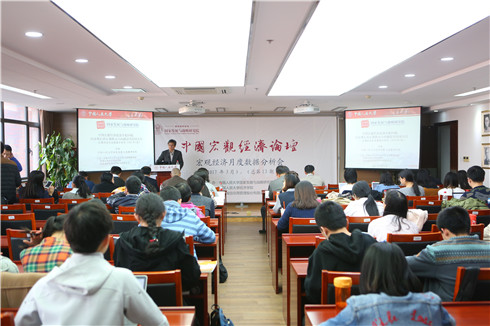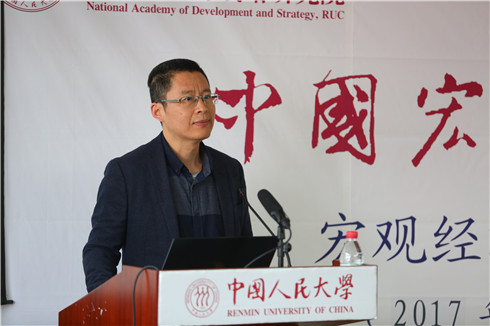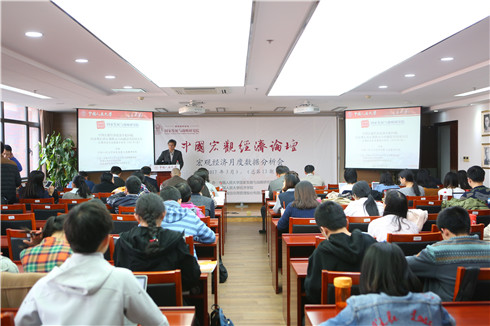 Research Update
Research Update
17
MarOn March 15, 2017, “China Macroeconomic Forum”-Macro Economy Monthly Data Analysis Meeting, jointly hosted by the National Academy of Development and Strategy (NADS), the School of Economics of Renmin University of China (RUC) and China Chengxin Credit Management Co., Ltd. was held at RUC. Macroeconomic data for February of 2017 were analyzed and interpreted at the meeting.

Attendees include such experts and scholars as Bi Jiyao, Deputy Director of the Academy of Macroeconomic Research, NDRC, Zong Liang, Chief Research Fellow of the Bank of China, Wu Ge, Cheif Economist of Huarong Securities, Yang Ruilong, Co-director of the Institute of Economic Research of RUC, and Jia Junxue, Professor of the School of Finance of RUC and Yin Heng, Research Fellow of the NADS of RUC.

Yin Heng, Research Fellow with NADS, released the macroeconomic monthly data analysis report on behalf of the research team. According to the report, the statistics in January and February of 2017 showed that the Chinese macroeconomic operational bottom has been confirmed generally. The features are as follows. Firstly, the growth rate of real GDP has inclined to stabilize, showing the sign of bottom rebound. Secondly, the industrial sector has been growing and endured the downturn trend of general economy. Thirdly, the growth rate of assets investment has stopped decreasing. Fourthly, RMB depreciation pressure has been released, foreign exchange has begun to stabilize, and the amount of decrease of overseas market demand has reduced. Fifthly, the price has been increasing.
As the economy is bound to enter another round of rising period, we think that the long-term driving force of economy growth is worth paying attention continuously, including the residents’ consumption, private investment, fund “from fictitious economy to real economy”and micro base of economic operation. Therefore, we proposed such suggestions as followed. Firstly, more measures should be taken to activate private entrepreneurship and investment. Secondly, efforts should be taken to reverse the downturn trend of resident’s consumption. Thirdly, the treasury policy could be more effective, improving the structural regulatory functions and increasing the utility efficiency of financial fund. Fourthly, prudent and neutral monetary policy is conducive to maintain the balance of mobility. Fifthly, the real estate industry has to be controlled and stabilized and long-term mechanism should be realized.

Guests at the meeting held in-depth discussions and reviews with regards to macroeconomic data of February and the analysis report, expressed their insightful points of view and provided targeted policy advice.